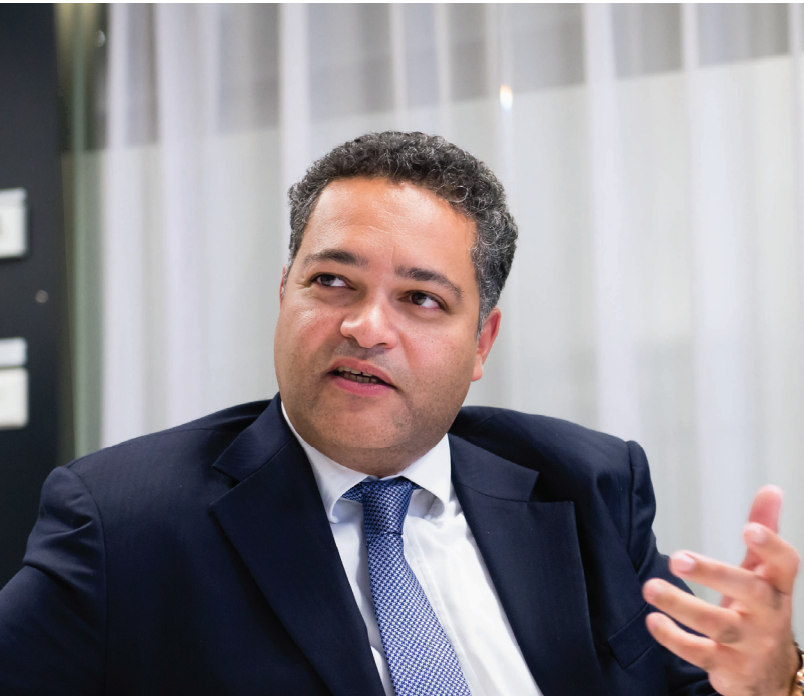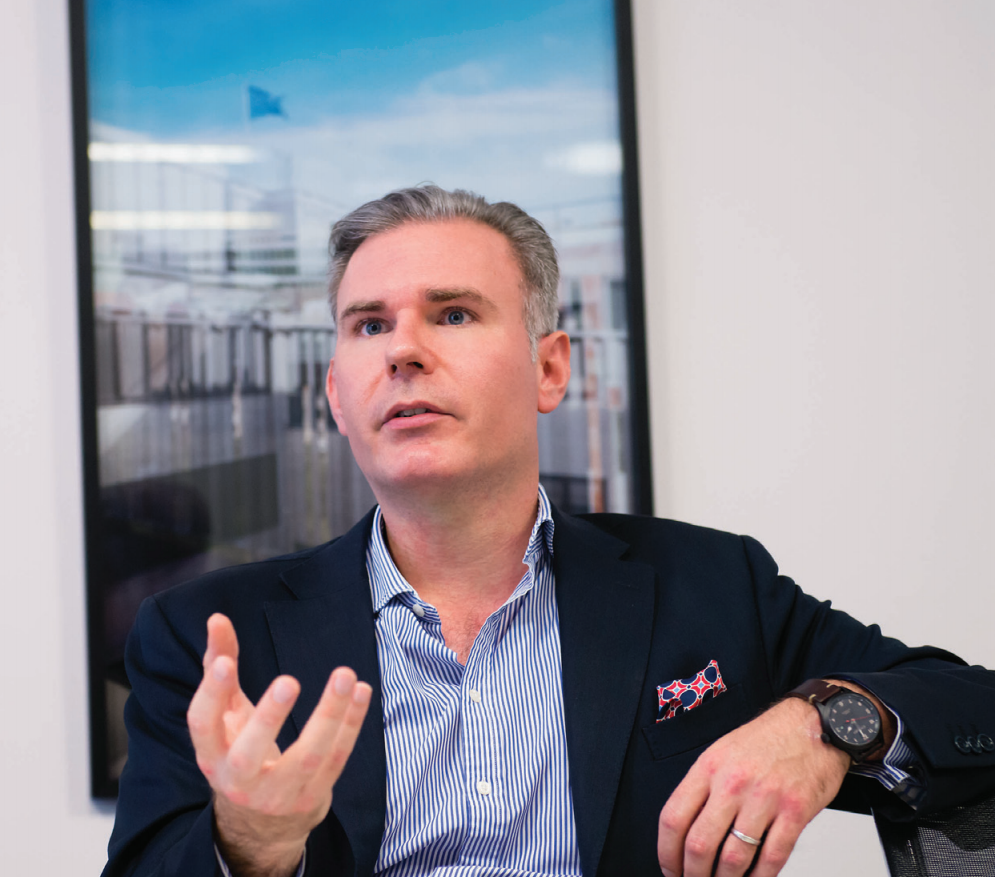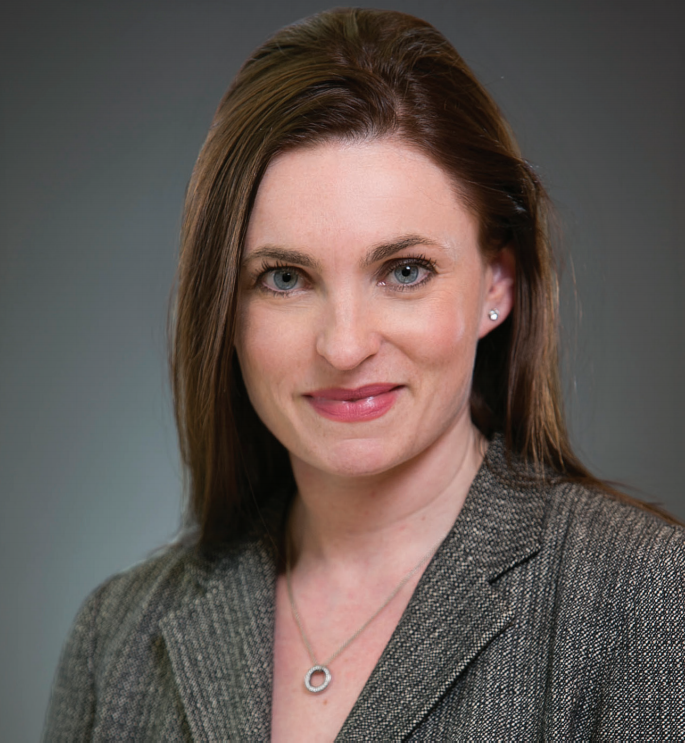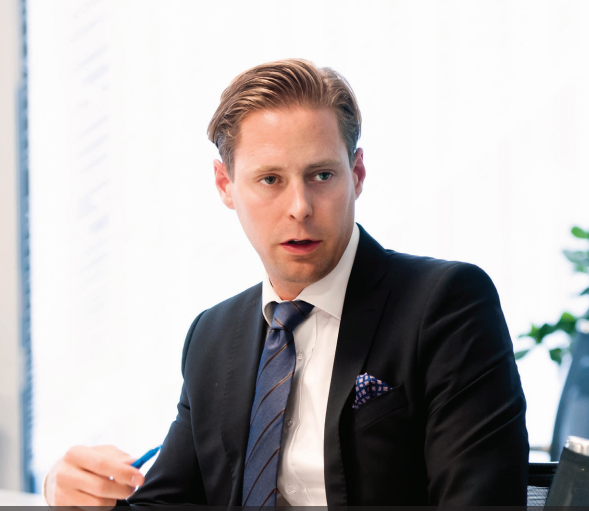Roundtable: Securities lending in the Nordics

Nordic securities lending participants met in Stockholm in the latter stages of 2017 to discuss the dominance of specials, the emerging role of ETFs, the prospects for CCPs and technological innovation.
Roundtable participants:
- Alastair O’Dell (chair)
- Matt Glennon, head of supply, prime finance, Citi
- Pierre Khemdoudi, managing director, IHS Markit
- Per Strömberg, equity finance, Handelsbanken Capital Markets
- Fiona Mitchell, head of Nordic relationship management, securities lending, Northern Trust Capital Markets
- Christopher Kandimaa, equity finance, Danske Bank
O’Dell: How have Nordic securities lending markets evolved over the last couple of years?
Kandimaa: Over the last five years we have always had one or two superspecials in the main indexes. As a rule, 80% of revenue comes from 20% of the index and we never know what’s going to hit next. The big name in Sweden has been Fingerprint Cards and there’s recently been a focus on the Norwegian oil sector. A couple of years ago it was Vestas and FLS in Denmark and Nokia in Finland. A decade ago it required utilisation of around 80% to become special. But now it becomes super-special very quickly. For example, this spring an AP Fund divested H&M and then people wanted to short it – it was a perfect storm.
Strömberg: I would also throw in airlines – the sector has been mostly short for a while. We’re trading more and more specials compared to before and it’s very dominated by oil, tech and airlines. It’s been really tricky to supply enough GC – there isn’t enough to meet demand. Supply is quite big in Sweden but not in Norway, Denmark or Finland. Due to capital rules, investment banks are not sitting on huge balances of excess GC.
O’Dell: Are there any trends in how beneficial owners supply the market?
Mitchell: Nordic institutions are showing greater interest in lending than ever before. The low yield environment, alongside rising expenses and regulatory burdens, has led them to seek diverse sources of revenue. The region has consistently delivered good equity revenues but over the last two years and there has certainly been an extremely robust specials market – Fingerprint Cards has been a highconviction short for hedge funds since the end of 2015. Fixed income lending plays second fiddle to equity lending. There are only pockets of demand from borrowers,
Kandimaa: Supply tends to come from government funds, such as Norway’s Norges Bank, Sweden’s AP Funds and Finland’s Varma. They have become increasingly dominant because many mid-size asset managers no longer lend. Local banks reign supreme and each has a niche – but this has left no one covering some types of mid-size client. Small hedge-type funds are definitely still in programmes – but as soon as they trade out there is a shortage. If it’s off the main index and demand is high, supply dries up very quickly.
Glennon: This is definitely what we have seen from a prime perspective in regards to non-Nordic agents lending on behalf of Nordic clients. There are periods where there is a loss of all shares due to corporate governance and liquidity squeezes as demonstrated by the data. Nordic-based lenders tend to understand the flows and risks of their domestic market much better than non-Nordic banks and therefore effectively manage them. We tend not to see liquidity spikes as much when we face Nordic banks.
Kandimaa: Recalls happen around AGMs. Over the last five years AP Funds and insurance companies have been criticised for not being active owners so environmental, social and governance issues have become topof-agenda items. When you own 5% of the company you get asked why you didn’t hold the board accountable. Insurance companies may only hold 1-2% each but jointly they have a lot of power.
Glennon: We’re looking for stable positions and rates. When we’re borrowing outside the region, on an undisclosed basis, where we don’t know whom we are facing – we may think it’s a portfolio of global funds but it may be one local fund. The volatility that this creates is not great. We’ve been active in single-stock term trades to prevent spikes and guarantee some stability.
O’Dell: Are asset owners interested in providing more supply?
Khemdoudi: The Nordic region represents roughly 10% of the European market and we have seen lendable inventory grow 30% year-onyear. We also see increasing technical interest from beneficial owners. They are looking at it closely – balancing revenues with risk and thinking about collateral. If they go down the collateral curve they will need to consider crosscorrelations. We see revenues on a downward trend. The year-on-year comparison for 2017 is sharply down. Fingerprint Cards was the superstar of 2016 but it is now much smaller – it retains only 20% of its valuation – and revenues are 38% down year-on-year. The trend towards specials has brought volatility to revenues – if you don’t have the super-special you’re not making money. We have also seen growth in term trades – they now account for 16% of trades compared to 20% in Europe. Beneficial owners know that’s where the revenue is.
Pierre Khemdoudi, managing director, IHS Markit
O’Dell: How have the banks responded to changing demand?
Strömberg: They have merged most desks together. Five years ago there was a financing desk, stock loan desk and maybe a pure delta one or corporate action desk. Everything is now together and you get more synergies. If you lose on one leg you usually gain on another. If there’s a lack of collateral in the market then you go a lot for the stock lending business, because you can lend it out, but on the other hand that decreases the leverage for financing. No one is in financing when they don’t have any collateral. It goes backwards and forwards.
Kandimaa: In Sweden the big area that is still unexplored is the corporate bond sector. No one is taking advantage of it – it’s tiny compared to Europe and the secondary market is not really there. But it’s something people are looking at, for collateral upgrade trades. We are small compared to the international banks but are still able to do a lot and can jump between products agnostically. If you want to price a swap, SBL or a single stock future it doesn’t matter – it’s usually the same guy doing it. Glennon: That’s definitely an advantage. Nordic banks are a lot more nimble and flexible so they can quickly respond. Multi-product desks make it very easy. Whether you want a swap, stock loan or financing trade you’ve got lots of options against local currencies.
O’Dell: What do you see for the future of ETFs? Do you see them becoming a larger part of lending in the Nordics?
Glennon: It’s been a struggle for the market to get ETFs viewed as acceptable collateral. We have often found that within an ETF there is a name that the beneficial owner does not accept on a single-line basis – if so, they can’t accept the whole ETF. However, there’s definitely a focus at Citi to push the ETF product across our whole Delta One cash equities and lending business. We see this becoming more popular.
Kandimaa: One big problem is that custody businesses usually classify ETFs, which are excluded, and this is hampering the market. There has not been the exponential growth of the US but we have Xact funds and there’s growth in sector ETFs. Insurance companies and asset managers looking at asset allocation rather than specific stocks and are allocating to ETFs. On the back of this we have seen the need to finance ETFs. The problem is aligning collateral policies – there’s no internationally agreed scorecard for ETFs. And, some other asset classes such as commodities are being traded as equities – how should we deal with those?
Christopher Kandimaa, equity finance, Danske Bank
Khemdoudi: The issue is the ability to look under the hood of ETFs. A lender may accept all DAX 30 stocks but not a fully physically-replicated ETF – but this should be treated exactly the same. We established a scorecard for ETFs using a rule-based approach. We provide lists on a daily basis, in an automated way, and it’s getting accepted and implemented by all the main tri-party agents. The next step is to complexify
O’Dell: To what extent is Basel III reshaping the market?
Mitchell: As an agent lender, we view Basel III from a demand perspective. Demand has both decreased and changed in nature. GC has seen the biggest decline – low-spread trades are no longer feasible given their use of balance sheet and regulatory capital. Demand for term lending has increased as borrowers look to secure longer-term funding. This can be an issue for some clients if they don’t want the perceived risk of being locked into fixed-period loans. There has also been an increase in demand for high-quality liquid assets (HQLA), as borrowers are mandated to hold a higher proportion these assets. Some prime brokers have severed ties with less profitable clients, although we are doubtful this has been a significant factor in the decreased demand. Borrowers are being more careful with how they deploy scarce resources – the days of sky-high loan balances are well and truly behind us.
Khemdoudi: Regulation has reshaped the market quite drastically. It is structural, areas such as repo treasury and securities lending were siloed but now these businesses are grouped within the bank and work together. It has also reshaped the way the industry trades – before GC was a no-brainer but now it’s all about term for capital efficiency and balance sheet utilisation. The next step is to think about the final borrower and lender, and things like the impact of putting on large balances. That’s another level of transparency. Securities finance commands large balances and therefore needs to be efficient.
Strömberg: It has invented a lot of new trades, such as the evergreen. There’s always a new way to make money that wasn’t there before. It always comes as a shock when it hits you, but it’s become a daily challenge for us to solve, even for GC and short term trades. It’s now moving to regulatory trades as well. It’s becoming a more and more common part of our daily work.
Glennon: The bulk of our borrow book is GC. Over the last two years it’s become more about deciding where to place our business in order to make it as capital efficient as possible. Also before we put on evergreen trades we make sure we’re facing single principals or lenders that are the appropriate risk weighting. We may have six to eight agreements across our book, all facing the most capital efficient counterparties we can find. SFTR and other regulatory requirements potentially push this further on, creating transparency into the underlying.
Mitchell: Regulation is a key factor across securities lending, and the Nordics are not immune. Higher funding costs, increased capital consumption and balance sheet capacity limitations are the key factors. Borrowers are seeking capital-efficient ways to cover short positions so CCPs, collateral pledge and term transactions are all priorities. While CCP and pledge activity remains limited, we anticipate that usage will grow during 2018 as beneficial owners and agent lenders adapt to borrower demand. We will continue to engage and educate our clients, ensuring they are well placed to make informed decisions. Regulation is also influencing demand for fixed income. As borrowers seek to meet new regulatory balance sheet ratios and funding thresholds, there has been a sustained increase in appetite to source core European sovereign bonds and other HQLA. Beneficial owners holding HQLA can benefit from healthy returns and utilisation.
Fiona Mitchell, head of Nordic relationship management, securities lending, Northern Trust Capital Markets
O’Dell: Is there still as much interest in CCPs in the Nordics, or has the impetus fallen away?
Kandimaa: For it to be interesting it has to bring benefits – it has to be cheaper, better and faster. A lot of them have set very high standards – too high – so trading bilaterally is cheaper. We will definitely use this route when it makes sense but, unless regulation forces it, I don’t see the critical mass to centralise in the Nordic region.
Strömberg: We are not going to be the first to go in this direction. The Nordic region doesn’t see it as a problem – there is no need to go through CCPs to continue doing business, or even make it more efficient. If everyone followed the big international banks onto CCPs and it became a requirement to continue trading, then we would have no choice. Without that, I wouldn’t say that’s the direction we are going. We are quite a small market compared to the rest of Europe – it depends on what the rest of Europe is facing.
Glennon: CCPs offer flexibility and another trading option. We are thinking about how we can increase our capacity without increasing our footprint. We are moving forward with CCPs and pledge together and pledge seems to have the faster route to market. For a particular counterparty CCP, pledge or traditional title transfer could be optimal.
Mitchell: Nordic clients are interested in the pledge collateral model, particularly equity collateral as it potentially presents a solution to Esma’s guidelines on Market Abuse Regulation (MAR) and the need to restrict exposure to certain names. There is more interest in pledge collateral than CCPs as the advantages can immediately be seen. Nordic asset owners are interested in new routes and are engaged in conversations about peer-to-peer lending and CCPs. These activities may become more prevalent if the benefits become clear.
O’Dell: How are preparations for Mifid II and SFTR progressing in the Nordics?
Khemdoudi: The focus on SFTR will pick up in February once Mifid II is up and running. Agent lenders are the most impacted by SFTR – there is a significant workflow and data gathering challenge and they are focused on solutions. The biggest challenge is pooling information in one place and disseminating it on a consistent basis. If a firm already has a data warehouse they can feel pretty relaxed – then they just have to worry about reporting, UTIs and reconciliation. SFTR also brings benefits to banks, providing a central point for securities finance information and a new layer of analytics. It will challenge current workflows and infrastructures that are not fit for purpose. Banks need the ability to leverage data – not just for regulatory reporting but also for client reporting, their own treasury reporting and many other things.
Glennon: It’s a concern for the industry and all firms are looking for the optimal solution. We have started speaking to vendors and clients, and the whole market is engaged with Isla. It would be great if we used it as an opportunity to get everything disclosed, so we know which entity we are facing pre-trade. That would be fantastic for capital usage and efficiently directing trades and returns. Regulation is pushing us to a much more efficient place. Matching on a tradereporting basis, on T+1, should reduce breaks and settlement issues. We still get failed trades because of mismatched trade date or settlement instructions, which just shouldn’t happen. Matching requirements through SFTR at T+1 should minimise that.
Matt Glennon, head of supply, prime finance, Citi
Mitchell: Mifid II will not have a major impact on the way beneficial owners interact agent lenders and there will be little overall impact on the service. They will see an increase in transparency and disclosure of key information and remain relatively untroubled, unless they are captured with respect to their own underlying clients. SFTR is a very different story. Beneficial owners must recognise that the obligation to report under SFTR is their obligation. If they use an agent lender, they must ensure their provider is able to support them in meeting it. We are well advanced with our SFTR offering ahead of the reporting obligation, expected in 2019. The challenge is not only in the significant data requirement, but also that two-sided reporting with small matching tolerances is likely to lead to an increase in post-reporting rework. The industry is working to ensure vendor solutions that allow prereporting reconciliation are possible, keeping rework to a minimum.
O’Dell: A lot of Nordic lending is done on a principal basis. Does that make SFTR less onerous?
Kandimaa: It makes it a lot easier but we still have to deal with the reporting environment. How are the local FSAs going to interpret best execution? They’ve been awfully quiet. We know we need to report and have procedures in place – but they haven’t set out how they want it, what they want it for or what they will do with it. Hopefully we will get more clarification before the end of the year. If they are not looking at best execution policy there is no way of implementing it. We hope that the FSA will take a more pragmatic approach.
Glennon: Once SFTR is implemented we will see the cost of reporting. The principal model could potentially become a lot more attractive than the agency one. If an agent bulks up a trade with 100 people behind it I’ve got to report on 100 UTIs – then I’d rather trade on a principal basis and report once. The next phase will be about how to trade efficiently. Kandimaa: It’s likely we’ll see a mezzanine layer emerge to bulk up trades, perhaps through brokers. What we’re seeing now is the blueprint – amendments will be made along the way. Regulators want to see everything but sometimes it’s better to step back and look at the aggregate. The aggregate number of shorts is what affects price. My view is that we will see a counterreaction when they get all this data.
Strömberg: I think that transparency is positive and hope that something good comes out of it. For all desks, the breakeven level is getting higher and higher every year due to all the administrative costs, the need to maintain reporting and other things. I really hope that something good comes out of it – otherwise it’s just regulation of the business for the sake of it. Hopefully, transparency will turn into something worthwhile.
O’Dell: What is the focus of technology investment in the Nordic securities finance market?
Strömberg: We invested in a new system a couple of years back and we’re developing it all the time for all the mandatory regulations. We aren’t up and running like the big international banks but, because we are small, when the people and the money are in place we can implement quickly. We have relatively few people so we can’t have lots of manual routines and need to automate as much as we can. All the regulatory work needs to be done before
Per Strömberg, equity finance, Handelsbanken Capital Markets
Glennon: Our goal has been to push as much down the pipes as possible on an automated basis and let the traders focus on higher revenue opportunities. Automation takes the heavy lifting away, which allows me to focus my team’s efforts in utilising their time on additional revenue generating trades rather than short coverage.
Kandimaa: A lot of investment is going into bridging existing infrastructures into new ones. We’re still using the same basic settlement infrastructure – but we’ll probably go for T+0 at some point, versus-payment rather than collateralised. The billion-dollar question is choosing what brings most revenue to your existing business. Blockchain might be revolutionary but my first question would be whether it justifies the investment in today’s environment.
Mitchell: Blockchain is clearly relevant to the future of securities lending. In theory, the technology should allow a significant amount of post-trade streamlining. Northern Trust, across the whole organisation, is heavily involved in the development of blockchain. The potential is huge, although there are a number of questions to be answered before we will see that potential transformed into practical implementation.
Khemdoudi: One of our uses of the latest technology is to provide securitylevel commentary on an automated basis, in addition to the commentary written by our team. It’s based on natural language generation, an algorithm that uses data to generate written news stories. You cannot tell a robot writes the stories – and we would have had to hire 20 people to produce the same output. We have a dedicated quant team and we are sharing ideas with out clients about predictive trading models for securities lending, for example. The root of automated trading is the ability to feed in parameters on a constant basis, including parameters from outside our world. Third parties can provide a single data point for market sentiment on a stock – that’s powerful when bundled with short interest. The challenge is to harvest all this data and put it into a nice format that can be ingested by a trading desk. You can bring in capabilities from a third-party for a fraction of the cost of doing it internally. That’s a great way of trying new things. Our world used to be insulated – now the newest, cutting-edge technologies make their way into the market. It’s exciting and opens new doors. Large market players are looking at blockchain and machine learning to get more out of automated processes.
Glennon: As a firm we have a forwardlooking vision and are supportive of new technologies which can enhance our business and client experience. This is prevalent to my team whereby we are open to looking at start-ups firms and new technologies that can assist in our day-to-day activities.
O'Dell: Where are the opportunities for Nordic beneficial owners in 2018?
Mitchell: Beneficial owners that have the ability to adapt their lending programme inline with the industry’s evolution can expect to be the biggest beneficiaries. Collateral flexibility will undoubtedly remain ever-present. As collateral mobility and optimisation increase across the financial sector, flexibility will be instrumental for outperformance. Beneficial owners that are able to use alternative trade structures, such as pledge collateral, CCPs, extended maturity tenders and alternative routes to markets – including exclusive agreements and lending to non-traditional borrowers – are in a better position to protect and grow revenues.
Found this useful?
Take a complimentary trial of the FOW Marketing Intelligence Platform – the comprehensive source of news and analysis across the buy- and sell- side.
Gain access to:
- A single source of in-depth news, insight and analysis across Asset Management, Securities Finance, Custody, Fund Services and Derivatives
- Our interactive database, optimized to enable you to summarise data and build graphs outlining market activity
- Exclusive whitepapers, supplements and industry analysis curated and published by Futures & Options World
- Breaking news, daily and weekly alerts on the markets most relevant to you









